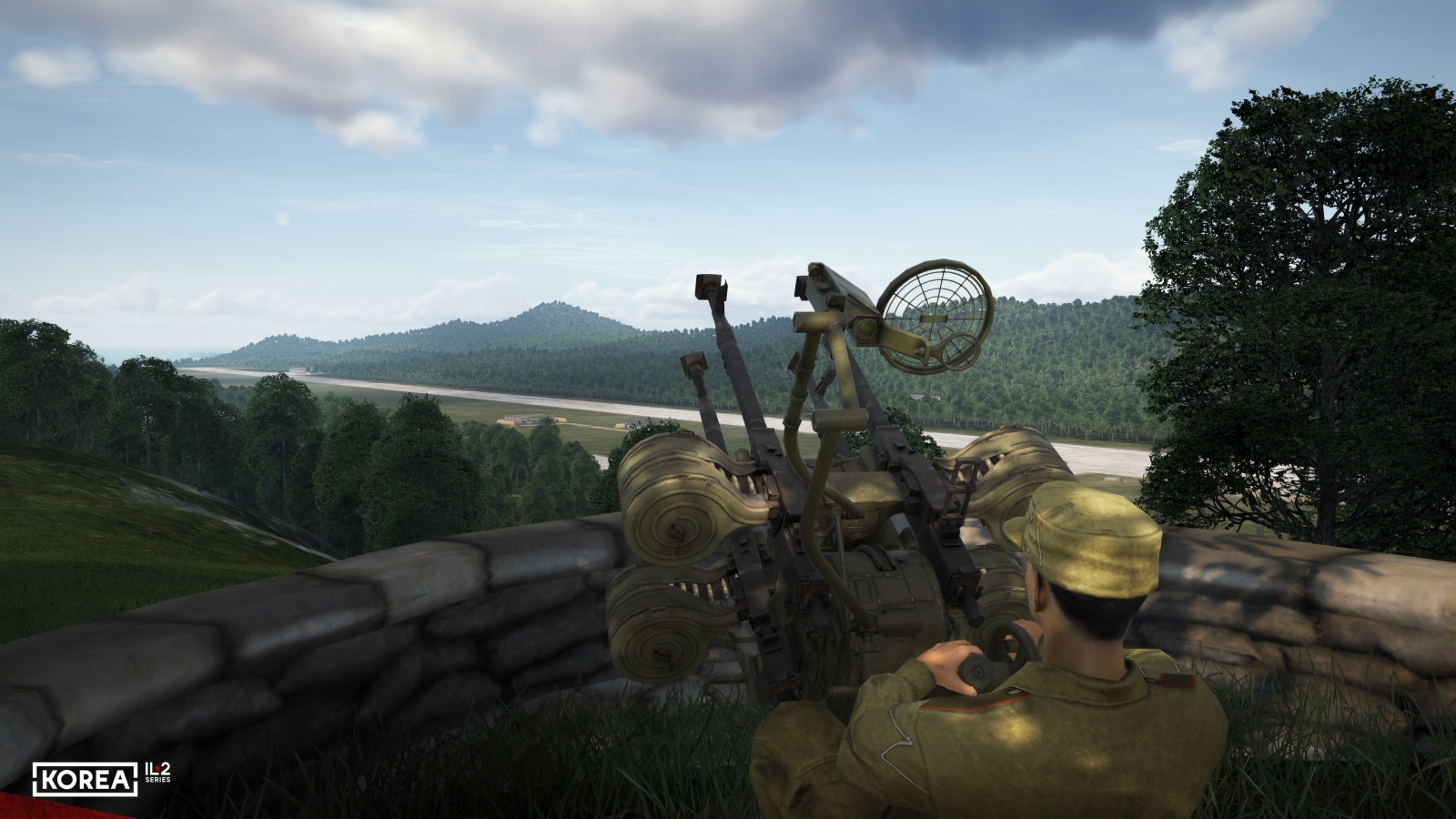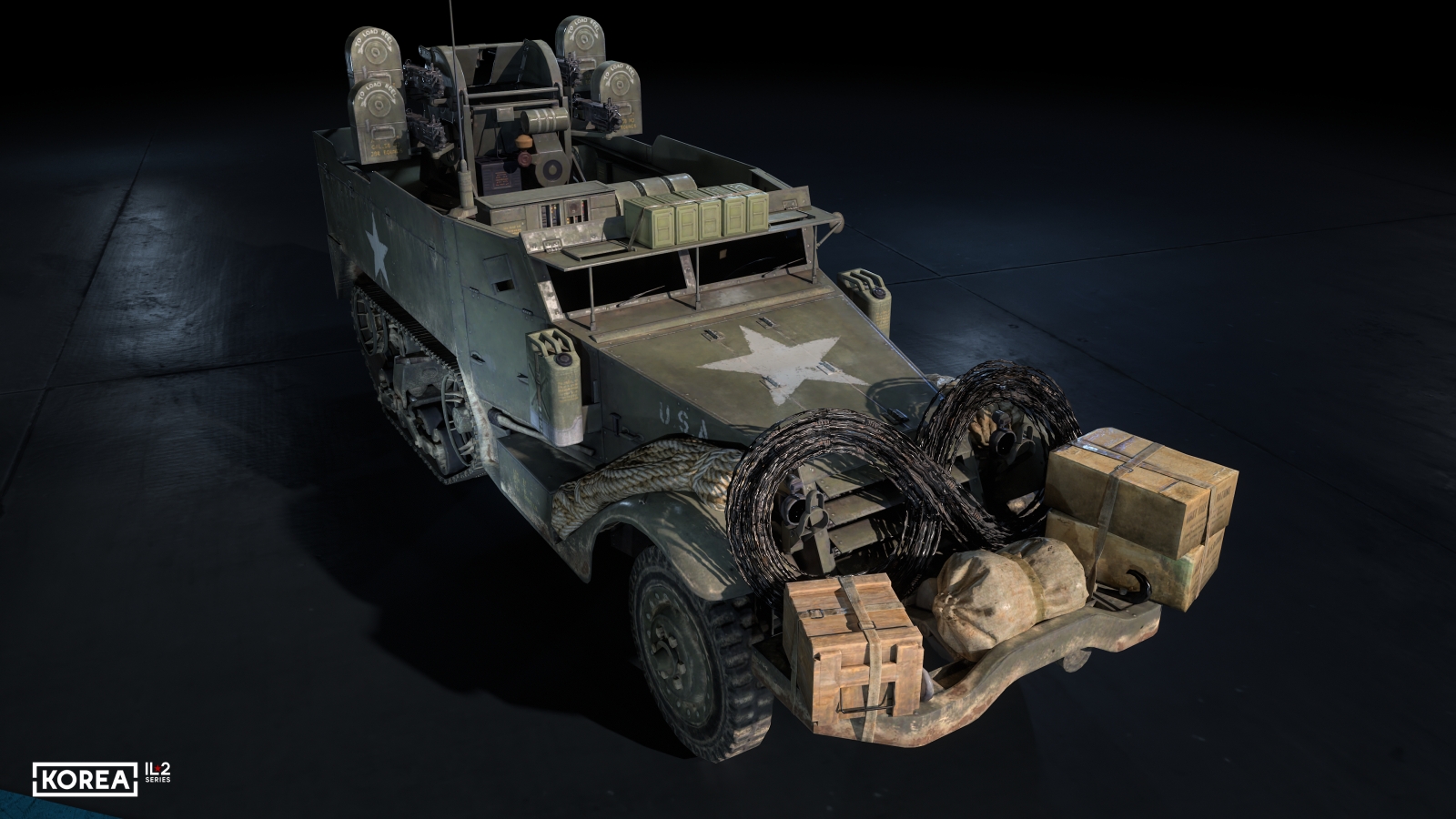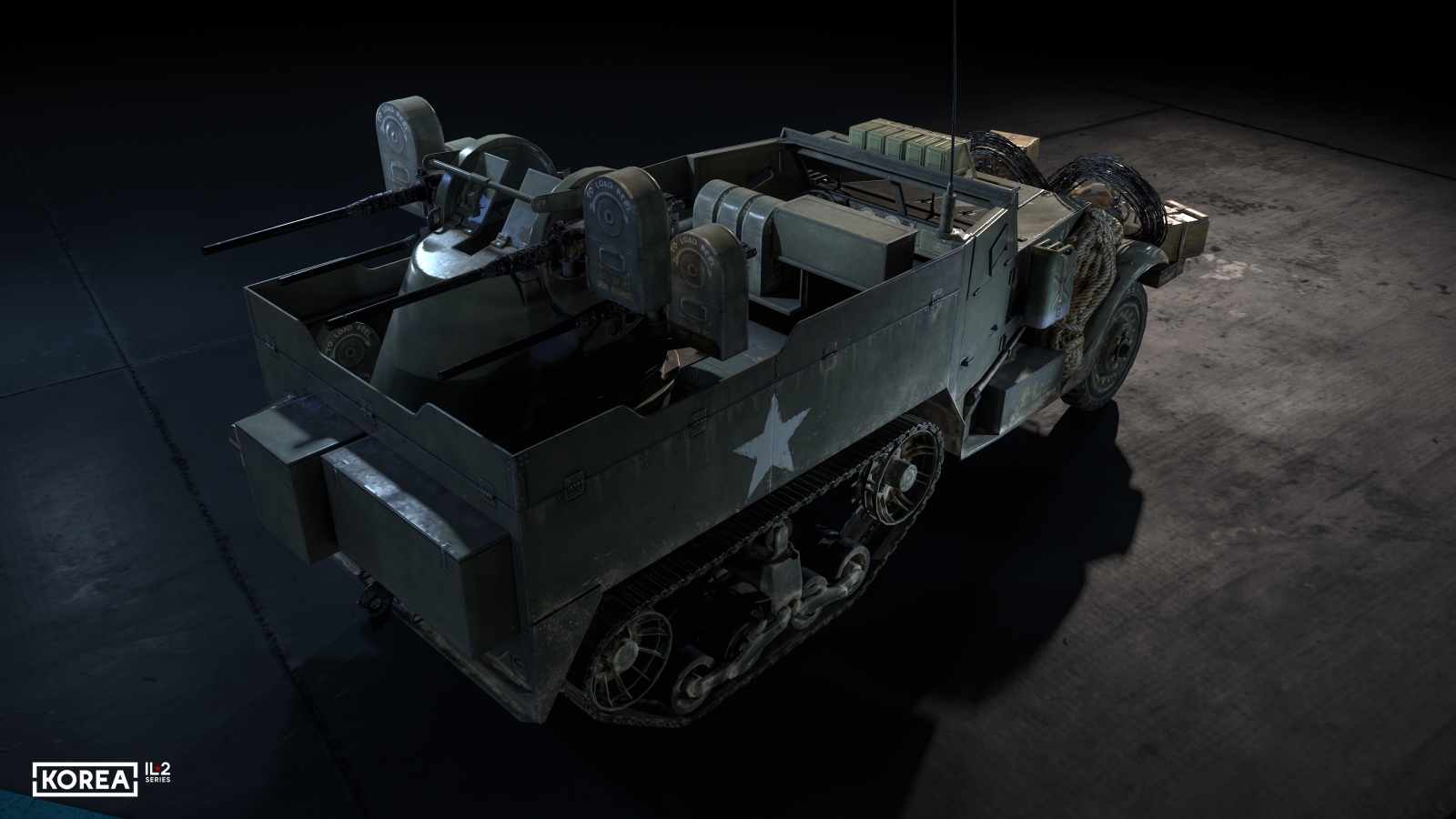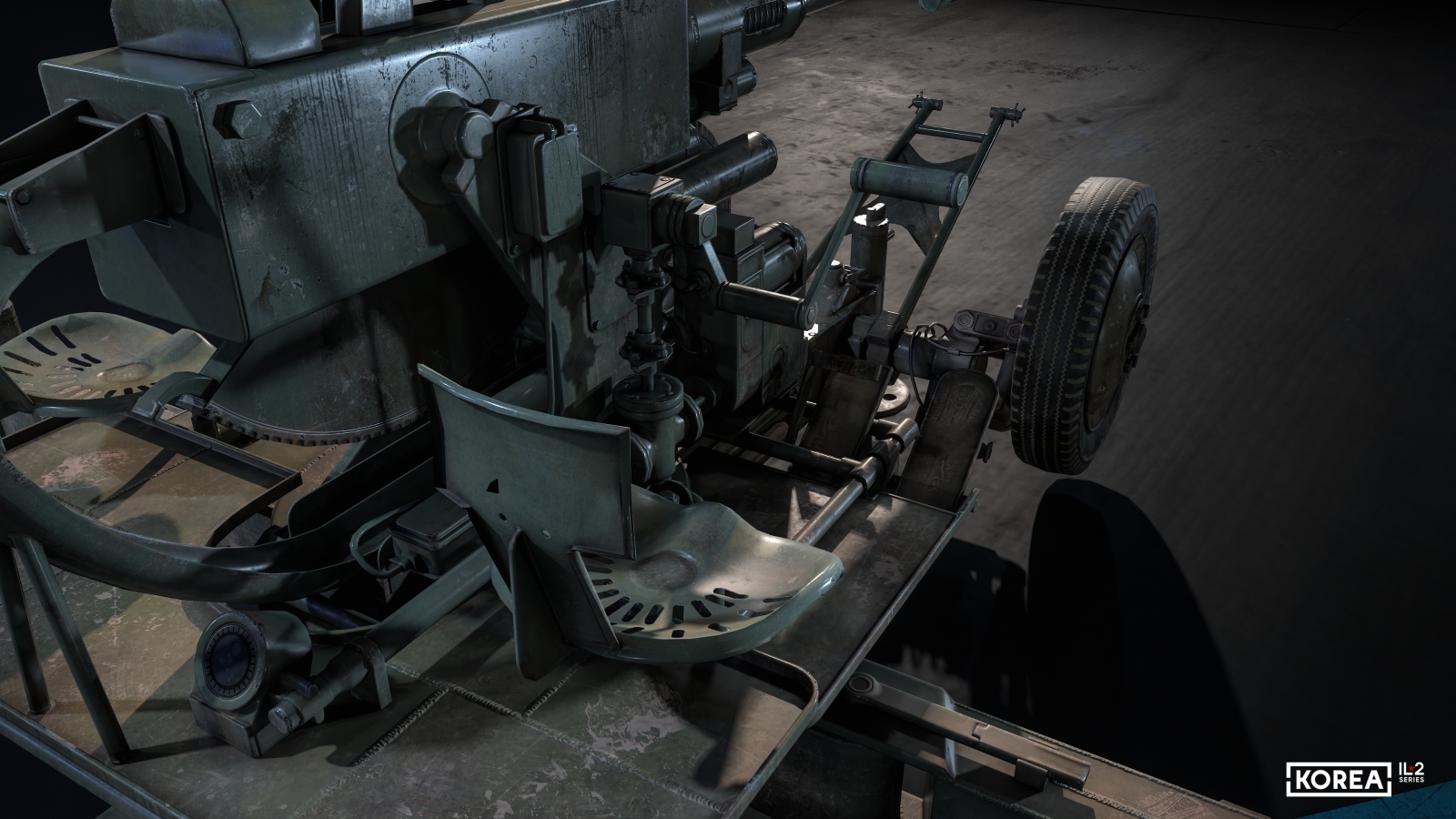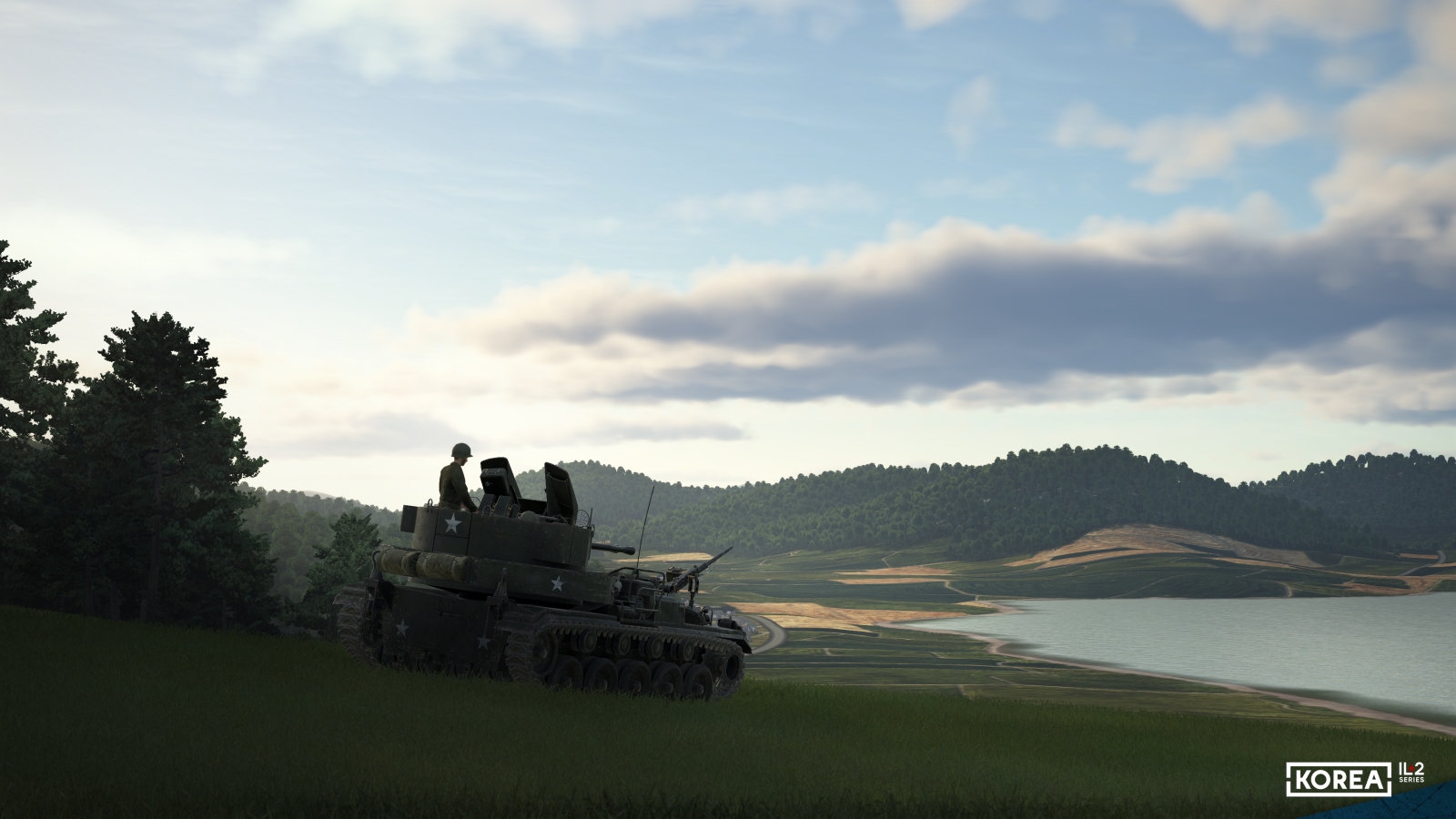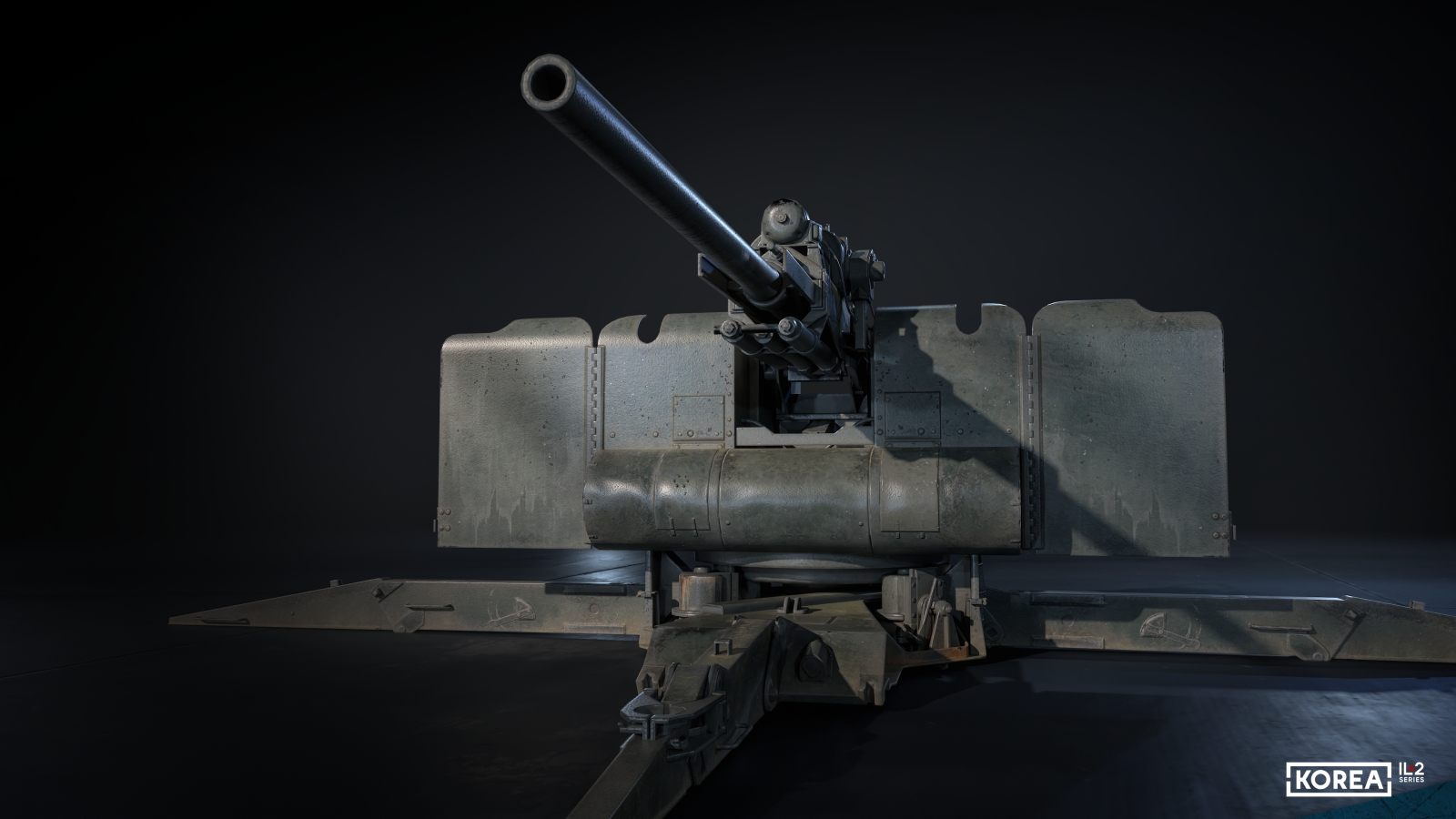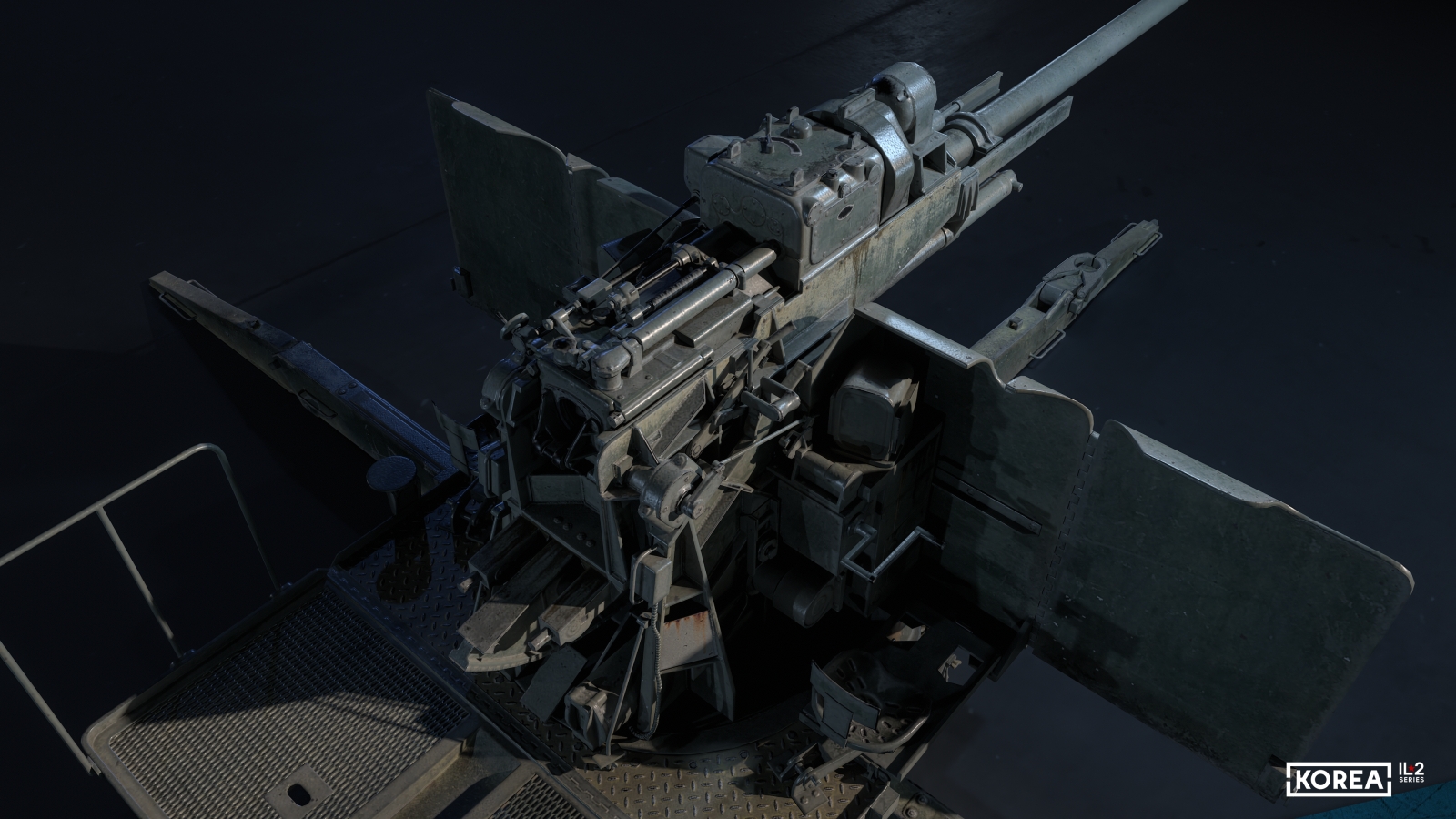Dev Blog #31
Hello comrades!
Today we are going to tell you about one of the main threats you will face in your future missions in the "Korea. IL2 series" simulator — anti-aircraft artillery.
The Korean War took place just at the turn of the beginning of the mass use of anti-aircraft missiles, not long before it. Literally 1−3 years after the war, all participants of the Cold War began to use anti-aircraft missile systems of various models, but the war in the skies of Korea was the last one where air-to-air and air-to-ground battles were fought with cannons and machine guns. Both sides, of course, used all the air defense experience gained during World War II and had powerful and effective artillery systems of various calibers. Let’s take a quick look at the AAA you’ll encounter in our new simulator, starting with the Soviet systems.
Today we are going to tell you about one of the main threats you will face in your future missions in the "Korea. IL2 series" simulator — anti-aircraft artillery.
The Korean War took place just at the turn of the beginning of the mass use of anti-aircraft missiles, not long before it. Literally 1−3 years after the war, all participants of the Cold War began to use anti-aircraft missile systems of various models, but the war in the skies of Korea was the last one where air-to-air and air-to-ground battles were fought with cannons and machine guns. Both sides, of course, used all the air defense experience gained during World War II and had powerful and effective artillery systems of various calibers. Let’s take a quick look at the AAA you’ll encounter in our new simulator, starting with the Soviet systems.
Red side AA machine guns are represented by the 7.62 mm SG-43 and the 12.7 mm DShKM. We have covered these machine guns in previous editions of the Dev Blog, but we will mention them here as well, since they were capable of firing at air targets. There is also a Czech-made 4-barrel DShK machine gun system called Vz.53 that could be mounted on the back of trucks, making this combination a self-propelled anti-aircraft machine gun. Anti-aircraft 12.7 mm machine guns were also installed on heavy armored vehicles — the IS-2 tank and the ISU-122 self-propelled gun.
Now we’re going to increase the caliber — the 25 mm automatic anti-aircraft gun 72-K with a rate of fire of 230 rounds per minute and the 37 mm automatic anti-aircraft gun 61-K with a rate of fire of 170 rounds per minute were installed on 4-wheeled towed vehicles, and the 61-K was also installed on trucks, resulting in a self-propelled anti-aircraft gun.
The large-caliber anti-aircraft artillery of the red side included the KC-12 85 mm anti-aircraft gun, a modification of the earlier 52-K model, and the Soviet air defense mainstay, the 100 mm KC-19, capable of engaging targets at altitudes of up to 15 kilometers. These guns were mounted on 4-wheeled trailers, but their transportation required a powerful tractor, as the weight of such a trailer reached nine and a half tons.
Blue side air defense in Korea was also diverse and is represented by all classes of guns. Anti-aircraft machine guns include the 7.62 mm M1919 and the 12.7 mm M2 .50 (the latter was mounted on Sherman and Patton tanks). There is also a specialized self-propelled anti-aircraft machine gun, the M16 MGMC, based on the M3 Half-Track armored personnel carrier.
Blue side anti-aircraft artillery starts with a stationary 40 mm Bofors L/60 on a 4-wheeled towed vehicle. There is also an armored self-propelled anti-aircraft M19 with twin Bofors guns, based on the Chaffey tank chassis.
The large caliber of the blue side AAA is represented by two guns. The first is the 90 mm M2 anti-aircraft gun, which, like the Soviet 85 mm gun, is a modification of an earlier version called M1.
The second gun, following the long American tradition of giving the same designation to completely different military equipment, confusing everyone, had a caliber of 120 mm and the index M1. It was a real monster, equipped with an automatic loading system, capable of hitting targets at altitudes of up to 17.5 kilometers.
Both guns were mounted on cruciform racks, which could be folded down to a transport position and turned into 2-axle trailers. Towing the 29 ton (!) 120 mm gun required a no less monstrous vehicle — the M6 Speed Tractor, which we will show you a little later.
Both guns were mounted on cruciform racks, which could be folded down to a transport position and turned into 2-axle trailers. Towing the 29 ton (!) 120 mm gun required a no less monstrous vehicle — the M6 Speed Tractor, which we will show you a little later.
Anti-aircraft artillery was always accompanied by searchlights for night operations. Red side had the 150 cm searchlight RP-15−1 "Yakhont" equipped with a radar range finder, which was powered by the UR4 diesel generator placed in the back of a truck or on a trailer. The blue side searchlight of a similar class was a 60-inch GE 1942A anti-aircraft searchlight and its accompanying diesel generator, mounted on 4-wheeled vehicles. It’s interesting to note that unlike the Soviet searchlight, the American vehicle had no suspension and was designed for moving the unit only within a firing position, not for long-distance transportation.
In addition to the trucks, cannons, howitzers, and anti-aircraft guns that we have already told you about, the Korea project will feature many other classes of AI land and sea objects, which we will tell you about in the next issues of our diaries.
Please stay tuned! We’ll be in touch!
Please stay tuned! We’ll be in touch!



